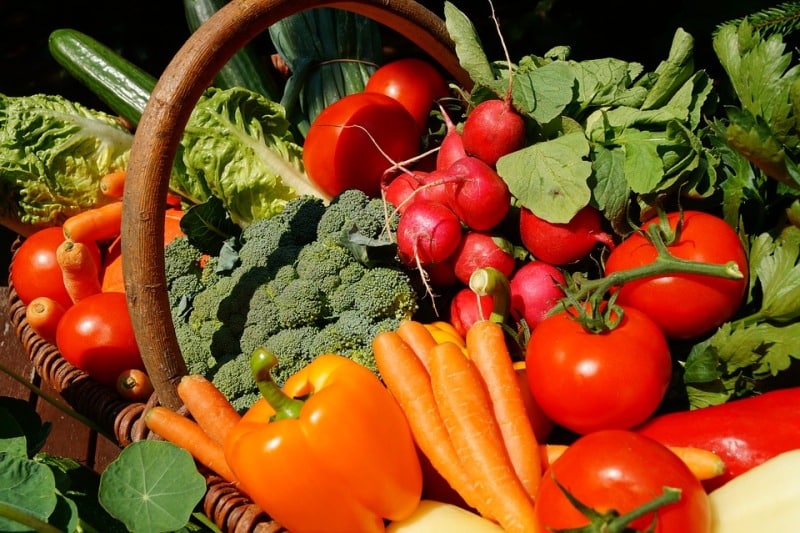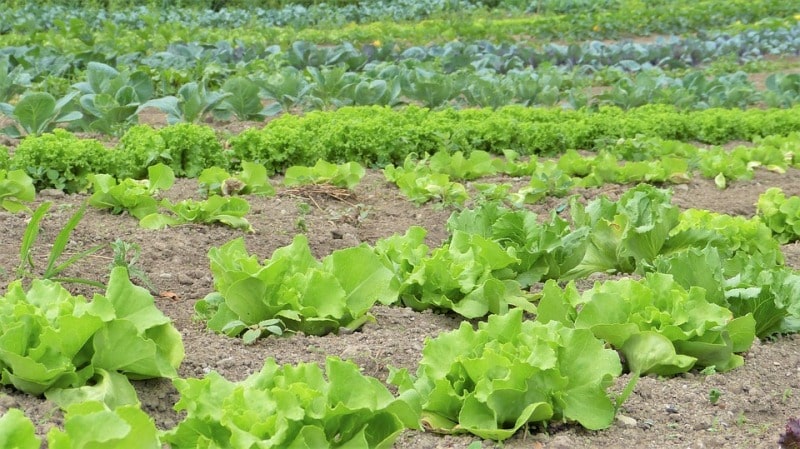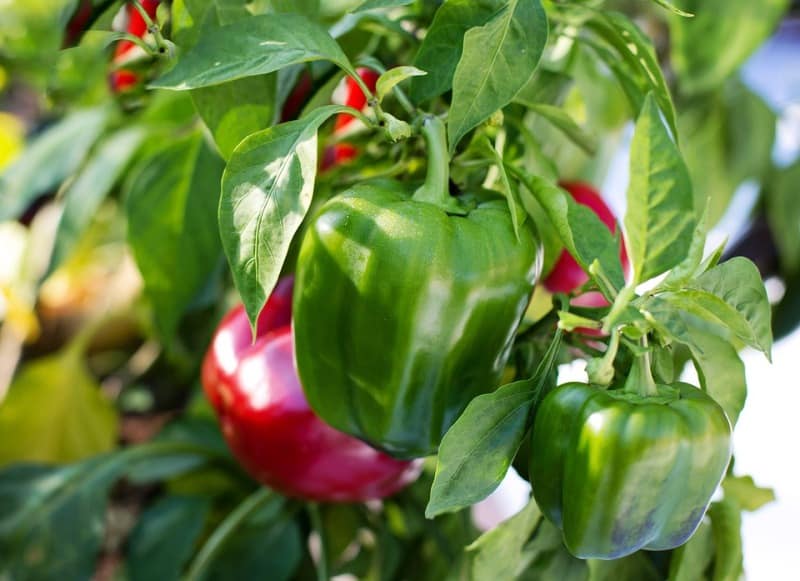A step by step guide for vegetable farming in India
Vegetable farming in India is a profitable business. Vegetable farming is the growing of all vegetables for human consumption. More recently, mechanization has revolutionized vegetable farming with almost all processes being able to be performed by the machine. Specialist producers grow the particular vegetables that do well in their locality. Generally, new methods such as aquaponics, Raised-bed gardening raised beds and cultivation under glass are used. Marketing can be done locally in farmer’s markets, traditional markets or farmers can contract their whole crops to wholesalers, canners or retailers.

India is the second-largest producers of vegetables in the world level with 2.8 percent of the total cropped area under vegetables. The most grown vegetables in India are potato, cabbage, Tomato, Cauliflower, Onion, Brinjal, Beans, Peas, and Cucumber. Let us now look into vegetable farming in India process, methods.
Crop rotation in vegetable production:
- Crop rotation is the systematic planting of different vegetable crops in a particular order over several years in the same growing space. This crop rotation process helps maintain nutrients in the soil, reduce soil erosion, and prevents plant diseases and pests.
- The principle of crop rotation is to grow specific groups of some vegetables on a different part of the vegetable plot each year. This helps to reduce a build-up of crop-specific pest and disease problems and it organizes groups of crops according to cultivation needs.
- There is no universally accepted rotation as the types of plants in a particular farm depend on the local soil, climate, and resources available.
Rotating the place where plant vegetables each year prevents the build-up of pests and diseases and allows the soil to replenish the various nutrients required by each type of vegetable crop.
Traditionally the below four groups are often rotated together;
Root plants: onion, shallots, garlic, beets, radishes, turnips, carrots, and potatoes.
Leafy plants: broccoli, lettuce, cabbage, cauliflower, and spinach.
Legumes: pole beans, peas and broad beans (these plants increase the nitrogen in the soil).
Fruiting plants: cucumbers, zucchini, tomatoes, pumpkins, eggplants, and sweet corn.
Profitable vegetable farming business:
Some of the vegetables for profitable business are given below;
- Amaranth
- Ash Gourd
- Asparagus
- Baby Corn
- Beetroot
- Bitter Gourd
- Bottle Gourd
- Brinjal
- Cabbage
- Carrot
- Cucumber
- Ladies Finger Or Okra
- Onion
- Potato
- Pumpkins
- Spinach
- Tomato
- Oyster Mushroom

You may also check the Bitter Gourd Project Report, Cultivation Cost, Profit.
Importance of vegetable farming in India:
Some of the importance of vegetable production will be given below;
- Vegetable production is very important in human nutrition
- Vegetables are a very important source of farm income
- Vegetables have aesthetic value
- Use vegetable production for medicinal purpose
- The important role of vegetables in the national economy
Key factors for vegetable farming:
- Generally, climate requirement for vegetable production involves the temperature, moisture, daylight, and wind conditions of a specific region. Climatic factors strongly affect all stages and processes of vegetable plant growth.
- The choice of a site for vegetable farming involves such factors as soil and climatic region. In addition, with the continued trend toward specialization and mechanization, moderately large areas are required for commercial production, and adequate water supply and transportation facilities are essential.
- Soil preparation for vegetable growing involves many of the normal operations required for other crops. Good drainage is particularly important for early vegetables because of wet soil retards development.
- Seed production in all vegetables is the limiting factor for the cultivation of vegetables in India. The vegetables need a specific temperature and other climatic conditions for flowering and fruit set. Some vegetables are developed in one part of the country but seed production is restricted to another part. To reduce such microclimatic condition a protected environment is very essential.
- Most vegetable crops are planted in the field where they are to produce to maturity. A few kinds are normally started in a seedbed, established in the greenhouse or in the open, and transplanted as seedlings.
- Practices required for a vegetable crop grown in the field consist of cultivation; irrigation; application of fertilizers; control of weeds, diseases, and insects; protection against frost; and the application of growth regulators if necessary.
- Factors determining the harvest date contain the genetic constitution of the vegetable variety, the planting date, and environmental conditions during the growing season. Successive harvest dates can be obtained either by planting varieties having different maturity dates or by changing the sequence of planting dates of one particular variety.
You may be interested in Solar Subsidy, Loan Schemes for Farming in India.
Furrow-irrigated raised bed (FIRB) planting
Furrow-irrigated raised bed (FIRB) planting alone can save about 36% water over conventional flood irrigation system. There are advantages like better aeration to roots, fewer weeds; plants do not fall in furrows, etc.
FIRB planting coupled with paddy straw mulch (7.5 tonnes/ha) has registered maximum fruit yield that is 45 t/ha in tomato than conventional irrigation without mulch (29 t/ha). And saves about 45% water with 55% enhancement in yield.
Different types of vegetable crops grown in India:
Vegetable farming is a type of crop production intended mainly for human consumption of the crop’s edible parts such as the shoot, leaves, fruits, and roots. According to the consuming part of the crop, different types of vegetables are divided into the following mentioned groups:
- Leaf vegetables (lettuce, cabbage, spinach)
- Fruit vegetables (pepper, cucumber, tomato)
- Root vegetables (carrot, radish, sweet potato)
- Bulb vegetables (garlic, onion, fennel)
- Flower vegetables (artichoke, cauliflower, broccoli)
Climate requirement for vegetable farming in India:

Climate and climatic variability is a critical factor in vegetable farming and is largely beyond control unless you plan to establish protected cropping such as glasshouse or shade-house production. Climate will determine what vegetable crops can be grown and at what time of the year. Some crops will be frost sensitive; others will have a heat condition or a minimum soil temperature for germination of seed.
Generally, varieties of definite vegetable crops such as cauliflowers or lettuce are produced in particular seasonal conditions and times. For some vegetable varieties, this timing can be very specific and if they are grown outside those conditions due to poor timing or unseasonal weather, the crop may fail due to prematurely running to seed or poor head formation.
You may also like Bottle Gourd Farming.
Water application for vegetable farming:
Water application methods include drip irrigation, overhead fixed and moveable sprinklers, traveling irrigators like center pivots and flood irrigation. Drip irrigation is the most water efficient application process but all systems have their pros and cons. Some production situations, crops or soil types cannot be suited to specific irrigation methods. It is very important no matter what the method used, that an even distribution pattern of water is applied to ensure even and controlled crop growth.
Sowing or planting in vegetable farming:
Growing of vegetables starts with sowing or planting procedure. Vegetable sowing means putting a particular seed directly into the prepared soil. On the other hand, vegetable planting containing the practice of putting already grown seedlings into the soil. Normally, seedlings can be grown in the field or in greenhouses.
There are two types of seedlings;
Bare root seedlings are developed in the field from the seed. As the name implies, their roots are separated from the soil when they are moved to the planting location.
Rootball seedlings are grown in pots or blocks and moved to the planting location with the soil attached to the roots.
Sowing is a recommended practice for some vegetables with delicate roots and taproots, such as carrots, turnips, and radishes. Growing of vegetables from seedlings is more suitable in cases such as slow-growing perennials, crops with fine and expensive seed, and warm-season crops.
The choice of flat or raised beds depends on soil type, the vegetable crop, its production requirements, and the topography of the paddock. Typically heavier soil types will need raised beds to ensure that there is good drainage around the roots of the crop. Crops such as lettuce which are very susceptible to waterlogging can require raised beds on lighter soils.
Crops can be direct-seeded or sown as transplants. In general large-seeded vegetables such as sweet corn or pumpkins, or crops with a high density of plants are generally direct-seeded. Root crops such as carrots and parsnips, where it is important to keep the taproot undamaged, are direct-seeded. Other crops are generally commercially grown using transplants, usually supplied by a specialist nursery. This is particularly relevant when using high-cost hybrid seed.
Chemical control for vegetable production:
The spray program required for vegetable production will be dependent on a range of factors such pest levels, weather -temperature, rainfall, and quality requirements for the crop i.e. what is the tolerance for damage to the marketable crop.
Some organisms have been exposed to be resistant to certain chemicals or chemical groups. It is very important to minimize the development of resistance. There are several resistance management strategies that have been developed. Chemical labels give information on how to minimize resistance. This can include rotating chemical groups or limiting the number of sprays per crop.
You may also read the Effects of Climate Change on Agriculture in India.
Harvesting vegetable crops:
Harvest labor can be a significant consideration when deciding to produce vegetables. You may want a consistent supply of labor or many hands all at once or something in between.
The vegetable crop you choose will dictate the type of labor you need. Crops generally fall into one of four categories
Harvested by machinery – These do not have a high demand for labor but the capital outlay for the machinery can be significant. Some examples are potatoes, corn, carrots, and processing tomatoes.
Harvested by hand once – Labor demands for these crops are normally lower. Depending on the size of the operation these can be managed by a family unit. Considerations will depend on the perishability of the crop and how quickly it needs to be harvested after it matures. Examples of this are pumpkins.
Harvested by hand with multiple picks and multiple cropping – Labor demand for these crops will differ depending on the size of the area planted and the number of picks required. Broccoli, for example, will usually have 2 to 3 picks and crops are also planted sequentially every 1 or 2 weeks to provide continuity of supply throughout the season.
Harvested by hand continuously – Crops can need pruning or training as well as harvesting. These crops can produce over a whole season or for extended periods with sequential plantings. Examples of these crops contain fresh tomatoes, squash, eggplant, asparagus and snow peas.
Some factors that determine successful vegetable production:
Whether the farming of vegetables is intended for fresh consumption, processing, or seed production, it can be a profitable business. However, there are some factors that may influence the profitability of vegetable production;
Seed quality; the sowing of quality, clean, labeled, graded to size, viable, and healthy seed can create all the difference between success and failure in vegetable farming
Optimal time of sowing and planting; depends on the climate and environmental conditions of the specific area, as well as some requirements of each crop
Method of planting; the secret to successful vegetable farming lies in the managing of optimal crop requirements, by combining the production of transplants in the greenhouses with planting in the field.
Main vegetable producing states of India
The below-given list is the main vegetable producing states in India;
- West Bengal
- Uttar Pradesh
- Bihar
- Madhya Pradesh
- Gujarat
- Odisha
- Karnataka
- Maharashtra
- Andhra Pradesh
- Chhattisgarh
That’s all fellow farmers about vegetable farming in India and production. Keep growing veggies!.
You may be interested in Growing Hydroponic Chives.
I am from nepalgunj which is bordertown adjacent to rupaidiha in UP. I am interested for the training in vegetable farming and mushroom farming and fish farming near Lucknow. Could you assist me to find the places, cost of training accomodation in near future please. Thanks.
Regards
Very nice information dear brother given by you
Thank you it is very helpful for my college studies horticulture is my vocational subject